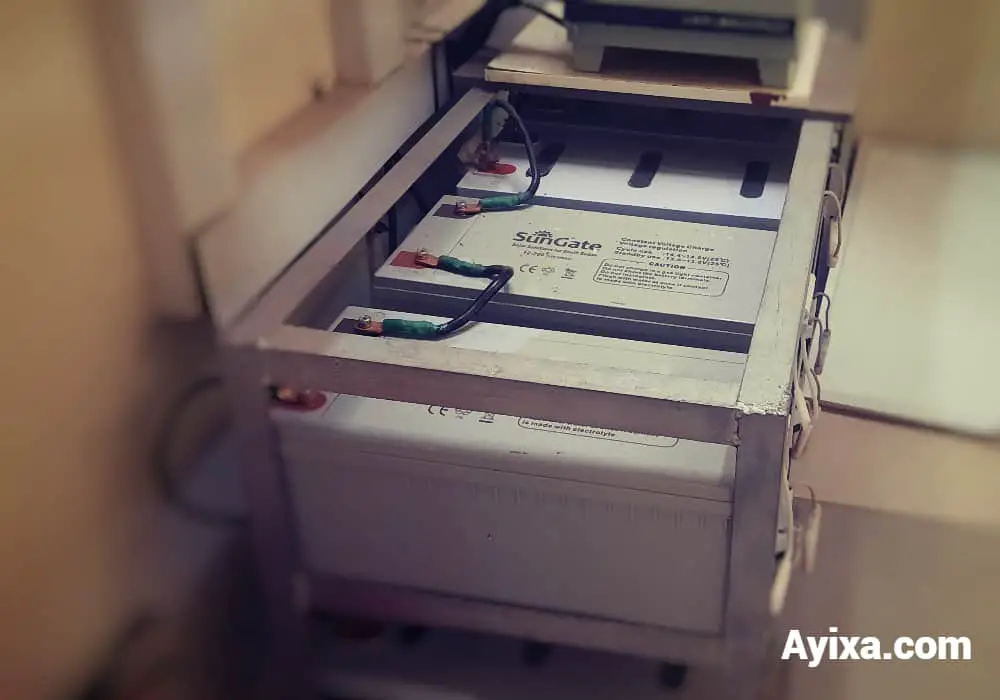If plan to supply electricity to a remote cabin or a tool shed but don’t want to run power cables from the grid for whatever reason – maybe the grid is not available or is damn expensive to do so then you might want to consider solar power.
A 1,000-watt solar system might be just what you need depending on the power consumption of connected appliances.
The issue with some of these kits is that they don’t ship batteries with them.
So what size (Ah) of batteries should you use and how many do you need to run the appliances in your shed or cabin with 1,000 watts of solar panels available?
Read on to find out how many batteries and what size you can use.
Note: The information provided here is only a guide. The fact is this is just one of the possible battery sizes and numbers you can consider with a 1,000-watt solar system.
Always contact the kit supplier for guidance or a qualified solar professional.
The Right Battery Size for a 1,000-watt Solar
Unfortunately, there’s no one right size – It depends on:
- the combined power consumption of the connected appliances,
- whether you plan to store some or all of the generated solar energy and
- whether you use the more affordable but heavier AGM or the more expensive but longer-lasting and lighter
Using LiFePO4 batteries
You can expect about 4,000 watt-hours of energy from the system assuming your location receives about 4 sunshine hours.
To store all this energy using LiFeP04 batteries, you can use battery banks with the following capacities:
• 333 Ah at 12V
• 166 Ah at 24V, or
• 83Ah at 48V
Using AGM Batteries
To store 100% of this energy, you’ll need at least double the capacity of the LiFeP04 batteries.
AGM batteries should only be discharged to 50% of their capacity for them to last.
Therefore consider the following AGM battery bank capacities to store as much of the available energy:
• 666 Ah at 12V
• 333 Ah at 24V
• 166 Ah at 48V,
Is all this battery capacity Necessary?
Not necessarily. If the power consumption of connected appliances is lower, then you can size the battery bank accordingly.
From experience though, it is not recommended by the battery manufacturers to size the battery bank lower when you have plans to grow the battery bank.
Adding more batteries later affects the batteries’ ability to charge uniformly which affects their lifespan. All batteries should be of the same age!
How Many Batteries to Use?
You can use 1 x 100Ah 48V LiFEPO4, or 2 x 12V, 100Ah LiFEPO4 connected in parallel.
Should you choose to use the more affordable AGM batteries, try 2 strings of 2 x 12V, 200Ah batteries connected in series.
How Long to Charge the Battery Bank?
The batteries will charge in about 6-8 hours if discharged to the recommended depth of discharge – 50% for AGM and 80% for LiFePO4. The charging time will be shorter if they’re partially discharged.
What Voltage to Use for the Battery Bank?
I’d recommend you use at least a 24V or 48V battery bank preferably.
This way the solar panel charge current is lower (than when you use 12V) and you can use thinner and more flexible cables which are easier to work with and keep the power losses in the connecting cables lower.
Closing Thoughts
With a 1,000-watt solar system, as a starting point, you can use a 100 Ah 48V LiFePO4 battery or 400Ah AGM battery at 24V.
Note. This is only a guide. There are other battery combinations you can use.
Recommended Posts
